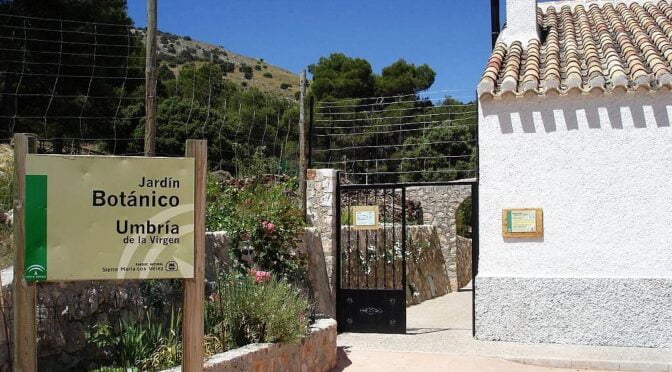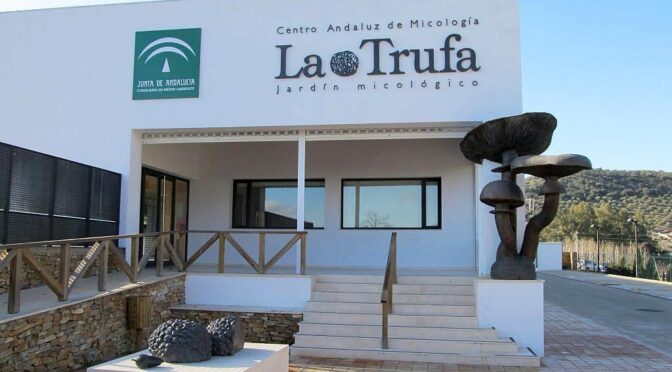The San Fernando Botanical Garden (Jardín botánico de San Fernando) is a botanical garden of about 9 hectares located next to the Bahía de Cádiz natural park.
The gardens were created in order to preserve the threatened or endangered and endemic plant species in the Bay of Cádiz as well as to promote the areas flora to the general public.
Look out for Mediterranean Chameleons that inhabit the area in good numbers.
It is easily found in the town of San Fernando, located on Pery-Junquera and San Ignacio avenues, next to the offices of the Bahía de Cádiz natural park.
The whole area is well set up with plants named in both scientific and Spanish common names and houses more than 600 species of plants from various ecosystems of the “Gaditano-Onubo-Algarviense Biogeographic Sector” and is grouped into various sections connected by well laid out paths.
Mediteranean woodland and scrub plants include
Arbutus unedo, Calicotome villosa , Chamaerops humilis, Daphne gnidium, Juniperus phoenicea subsp turbinata, Pistacia lentiscus, Quercus suber, Romeroinus officinalis, Ruscus aculeatus, Phillyrea angustifolia, Erica arborea, Calicotome villosa, Myrtus communis, Genista linifolia, Genista tridentata, Halimium lasianthum subsp. alyssoides, Quercus lusitanica, Phlomis purpurea, Viburnum tinus, Rhododendron ponticum subsp baeticum, Nerium oleander, Dorycnium rectum, Vinca difformis, Rhamnus lycioides subsp oleoides, Abies pinsapo, Prunus spinosa, Ulex baeticus, Genista cinerea.
Lowland, beach, dunes and coastal zone plants include
Ammophila arenaria, Armeria pungens, Artemisia crithmifolia, Carex arenaria, Cistus albidus, maritima Crucianella, Echium Gaditanum, Elymus farctus, Agropyron junceum, paralias Euphorbia, Eryngium maritimum, Helichrysum picardii, Juniperus oxycedrus subsp. macrocarpa, Limonium emarginatum, Lotus creticus, Malcolmia littorea, Otanthus maritimus, Pancratium maritimum, Pinus pinea, Polygonum maritimum, Vulpia fontquerana,Pallenis maritima, Crithmum maritimum, Limonium emarginatum, Pinus pinea, Juniperus phoenicea turbinata, Pistacia lentiscus, Retama sphaerocarpa, Arthrocnemum, macrostachyum, Atriplex tornabenei, Halimione portulacoides, crithmoides Inula, Limoniastrum monopetalum, Salsola vermiculata, ramosissima Salicornia, fruticosa Sarcocornia, Sarcocornia perennis, densiflora Spartina, maritima Spartina, Suaeda vera.
Ponds, lagoons and backwaters of rivers in Cádiz
Arundo donax, Phragmites australis, Scirpus holoschoenus, Scirpus maritimus, Cyperus longus, Eleocharis palustris, Glyceria declinata, Glyceria spicata, Typha angustifolia, Typha dominguensis, Callitriche cribosa, Callitriche stagnalis, Myriophyllum alternifolius, Myriophyllum spicatum, Najas marina, Potamogeton nodosus, Potamogeton pectinatus, Lemna minor, Wolffia arrhiza.
Sandstone dependant plants include
Quercus suber, Sedum hirsutum subsp. baeticum, Dianthus lusitanus, Drosophyllum lusitanicum, Lithodora prostrata subsp lusitanica, Psilotum nudum, Polypodium cambricum, Umbilicus rupestris, Osmunda regalis, Culcita macrocarpa, Cheilanthes guanchica, Davallia canariensis, Rhododendron ponticum subsp baeticum.
Limestone dependant plants include
Biscutella frutescens, Chaenorrhinum villosum, Silene andryalifolia, Putoria calabrica, Lavandula lanata, Rupicapnos africana subsp decipiens, Setaginella denticulata, Asplenium sagittatum, Bupleurum gibraltaricum, Adiantum capillus-veneris.
Non endemic species in the San Fernando Botanical Garden include
Cupressus sempervirens, Jacaranda mimosifolia, Phoenix dactylifera, Pittosporum tobira, Aeonium percarneum, Austrocylindropuntia subulata, Agave americana, Cleistocactus straussii, Crassula ovata ), Furcraea bedinghausii, Lavandula canariensis.
See the official website here: https://www.andalucia.org/en/san-fernando-leisure-and-fun-leisure-parks-jardin-botanico-de-san-fernando
Wildside Holidays – Spain
Take a trip on the Wildside! Discover the wildlife and nature of Spain, its Natural and National Parks and find the top wildlife, activity and walking holiday companies.






